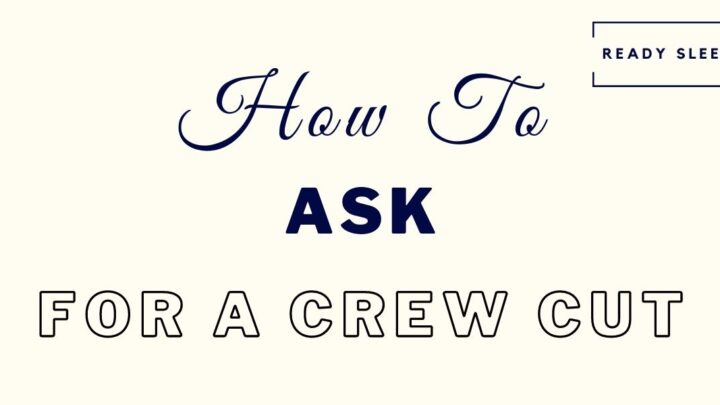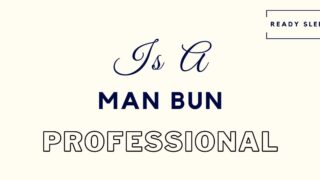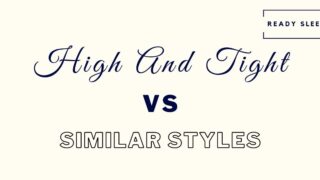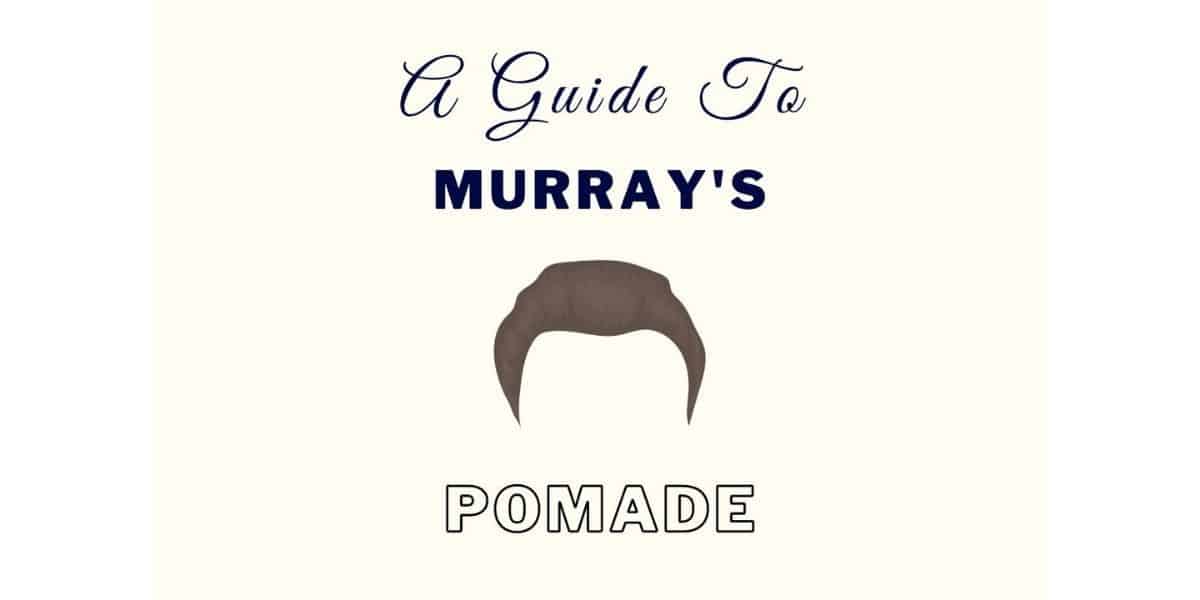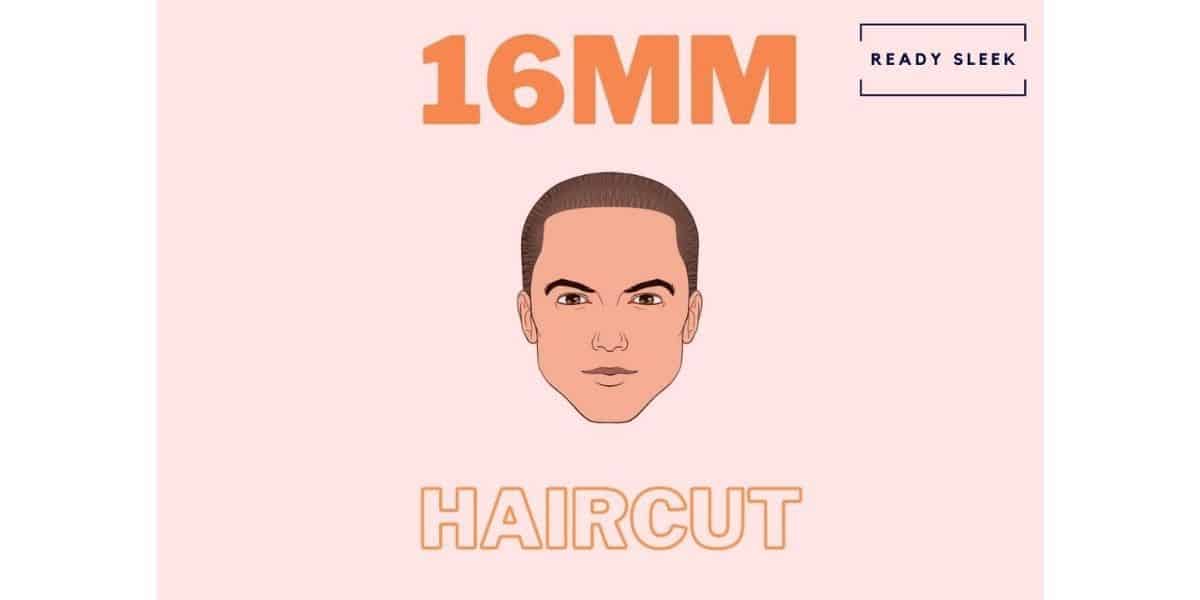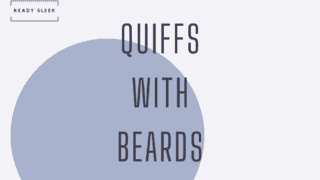It’s a classic, timeless hairstyle that many people ask for, but don’t really know how to request properly. So, how exactly do you ask for a crew cut?
When asking for a crew cut you will need to specify how long you want the scissor-cut, graduated hair on top to be. In addition, tell the barber how short you want the clipper-cut sides to be and if you want them to be faded.
Although that’s the gist, read on to find out how to ask for this glorious style in the most effective way possible.
It’s the key to getting the exact look you want with no nasty surprises.
Let’s get to it.
Know Exactly What A Crew Cut Is
I’ll talk through a solid step-by-step approach to requesting a crew cut shortly. But before that, it’s so important to know exactly what a crew cut is in the first place.
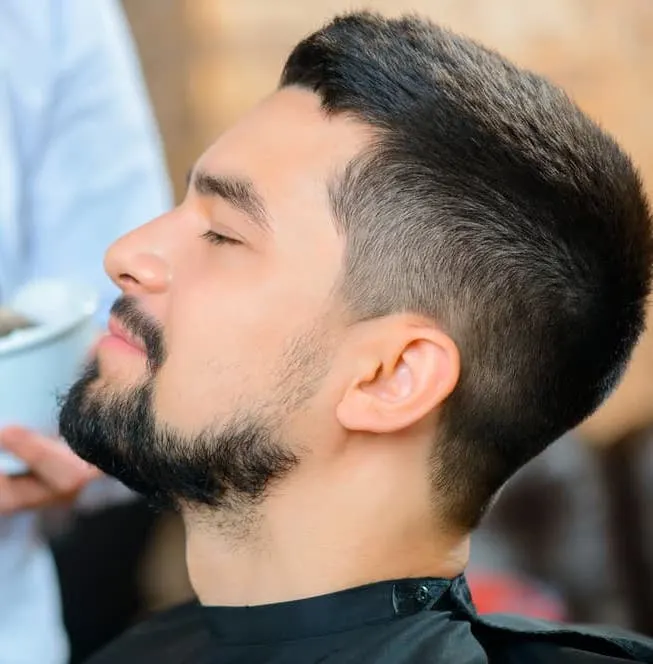
Image From Deposit Photos
The term is often used incorrectly, with many different styles being incorrectly labeled a “crew cut”.
A crew cut is a buzz cut variation where the scissor-cut hair on top is longer than the clipped hair at the sides. The hair on top graduates in length (i.e reduces in length) from the front to the back.
The hair at the front is often long enough to form a small quiff or pomp, but won’t usually exceed 1 inch in length. In other words, the hair on top may be longer than the sides, but it’s still pretty short.
The short sides and back blend gradually into the hair on top, unlike the sharp transition of the high and tight or the undercut.
Crew cuts often have the sides faded or tapered, but not always.
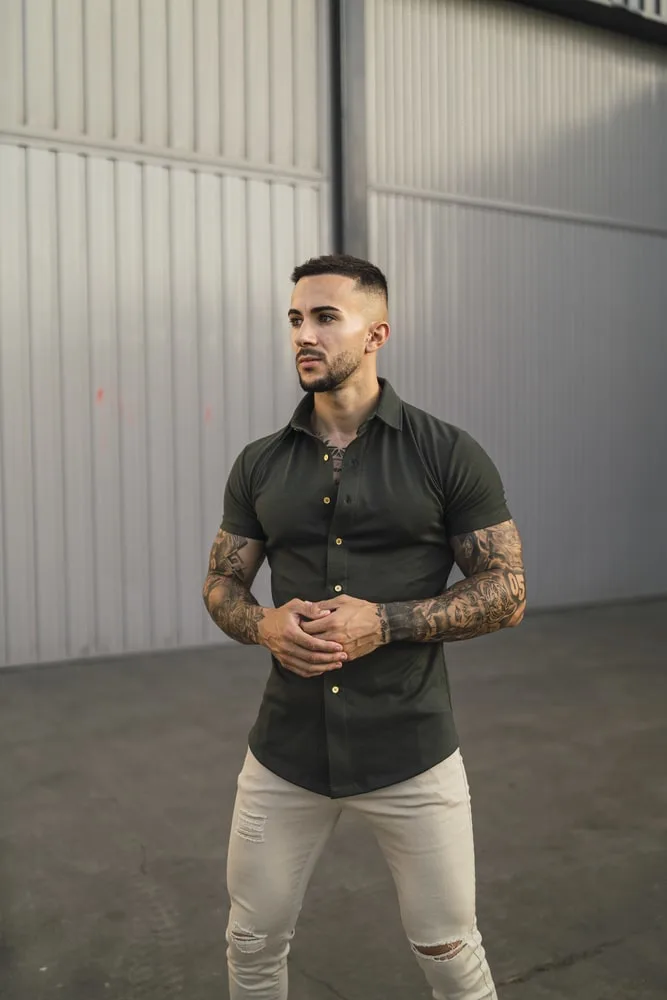
Ultimately, what sets a crew cut apart from other “short back and sides” styles is how the hair on top gradually reduces in length from the front to the back.
Essential Crew Cut Terminology
Here are a few terms you’ll want to get to grips with before asking your barber for a crew cut.
It’ll reduce the risk of any miscommunication.
- Fade: Where the sides and back gradually increase in length from bottom to top. The different lengths blend into each other seamlessly.
- Skin Fade: Where the shortest length of the fade is shaved all the way down to the skin.
- Taper: Another word for a very low fade that doesn’t extend above the top of the sideburns.
- Number (–): The clipper guard number. Don’t confuse this number for the exact length the guards trim down to in inches or mm. I’ve listed the main clipped guard numbers and the lengths they correspond to below.
If you want a more detailed rundown of clipper guards – including how they work and what lengths they trim down to – read this article.
Otherwise, here’s a summary of the main clipper guards and the lengths they trim down to (for most mainstream clipper brands):
- #0 – 1/16 inch
- #1 – 1/8 inch
- #2 – 1/4 inch
- #3 – 3/8 inch
- #4 – 1/2 inch
- #5 – 5/8 inch
- #6 – 3/4 inch
- #7 – 7/8 inch
- #8 – 1 inch
How To Ask A Barber For A Crew Cut [6 Steps]
Use this as a guide. By not missing out any of these steps, you can be extra sure that you’re asking for the right style in the right way.

Communication between barbers and clients is the key to a great crew cut.
Here’s an example of what you want to end up with:
“I’d like a crew cut with 1 inch graduated at the top, with a #1 into #3 low fade at the sides and back. Here’s a photograph of something similar I found”.
These steps will break this down and teach you exactly how to get to that point.
1. Ensure You Have Enough Length
Before you ask for a crew cut, it’s important to ensure you have enough length first.
It’s a style that’s known for having longer hair on top and shorter hair on the sides.
But before you head to the barber, make sure that the barber will be able to trim down to your desired crew cut length on top.
The hair should be at least ¾ inch long up top before you ask for a crew cut, but ideally at least 1 inch.
Less than ¾ inch and there just won’t be enough length there for the barber to work with.
2. Find A Photograph
Finding a photograph of the crew cut you would like and presenting it to the barber before the cut is a great way to express what you want.
While using terms like “crew cut” and “low fade” is useful and important, it’s no secret that no matter how prepared you are they often mean different things to different people – even barbers.
Using a photograph of the style you want is a lot more effective.
Sure, you still need to use the following steps in this routine to get your point across. But there’s absolutely no harm in using a photograph to express yourself as well.
The more information the barber has, the more likely it is that you get exactly the look you were going for.
Now that you know exactly what a crew cut actually is, you can use this information to identify true crew cuts in pictures online.
You could use the ones from this article, or have a general search for them online. Style magazines are also a great way to find some inspiration.
Don’t be embarrassed to show the barber a photograph of what you want – it’s very commonly done and they often appreciate having the additional information.
3. State How Short You Want The Top
With crew cuts, the hair on top usually ranges from ¾ inch (minimum) to 1.5 inches (maximum) at the front.
Remember, the hair then graduates (i.e reduces) in length as you go from the front to the back.
For example, 1 inch at the frontal hairline to ¾ inch further back.
It can be tricky to get this right – people are notoriously bad at estimating length when it comes to hair.
Because of this, a photograph will come in very handy.
Otherwise, prepare your lengths in advance. Before your barber visit, pull out a tape measure and try to figure out what length you want the hair on top.
If you don’t want to be this exact (as most people won’t), use your fingers to clearly express to the barber how much length you want to be taken off the top.
In addition, clearly say that you want a crew cut and that you want it to gradually reduce in length from the front to the back.
While most barbers will do this as soon as you ask for a crew cut, less experienced ones may just give you a basic “short back and sides” with no graduation in length up top.
Remember not to leave too much length up top. A crew cut shouldn’t usually exceed 1.5 inches right at the front, so 1 inch is often a good way to go.
Leaving more than 1.5 inches of length up top will often lead to it looking more like an Ivy League and less like a crew cut.
4. State How Short You Want The Sides
This part is more simple. It’s time to tell them what you want to do with the sides. For the sake of this tutorial, I’m treating the sides and back as one.
If you’re asking for a certain clipper guard length at the sides, the same thing will be done to the back.
The sides are clipped short – shorter than the scissor-cut hair on top.
How short you want the sides is really up to you. You can have them fully shaved, or buzzed down to a short clipper-cut length.
You could also choose to have all of the sides (and back) clipped down to the same short length, or have them gradually increase in length from the bottom up to your desired length further up. This is what you call a “fade” – I’ll be talking more about this in the next step.
But essentially, decide how short you want the sides and back.
Use the list of clipper guard lengths further up in this article to be as specific as possible when letting your barber know.
For example, “I’d like a crew cut with a number — at the sides”.
Crew cuts aren’t usually longer than a #3 at the sides, but it really depends on how much contrast you want with the longer hair on top.
5. Tell Them If You Want A Fade
Crew cuts often have a fade at the sides and back. So often, that it’s sometimes considered a core part of the style itself.
In step 4 you decided how short you want the sides. But if you wanted the sides and back to gradually increase and transition into that length, you’re probably thinking of a fade.
When asking for a fade, you need to tell the barber how high up you want the fade, as well as how short you want the shortest length of the fade to be.
Let’s talk about fade height first.
Fades can be “low”, “mid”, or “high”.
With “low fades”, the shortest length of the fade starts to increase and transition into longer lengths around half an inch above the ear.
“Mid fades” do so around an inch above the ear, and “high fades” around the level of the temples.
Then, tell them how short you want the shortest length of the fade to be. This is the length you’ve got at the bottom of the sides and back before it starts to transition (either at a low, mid, or high point).
Skin fades are fades where this shortest length is shaved all the way down.
A normal fade is one where the shortest length of the fade is clipper-cut down to a certain length before it gradually increases in length as you go up.
With a normal fade, you need to tell the barber how short you want the shortest length of the fade to be, as well as what length you want it to transition into.
For example, a “#1 into a #2 fade” or a “#2 into a #3 fade”.
6. Lineups And Patterns
Crew cuts are known for their simplicity. There usually aren’t any embellishments.
But if you want any lineups, hard parts, or patterns shaved into the sides, make sure you tell the barber at the beginning and not at the end.
It can be pretty tough to express fancy design work using words, so finding a photograph of something similar is often the best way to get your point across.
But at this point, you’re done.
This routine should help you get exactly the type of crew cut you were hoping for.
Conclusion
While the term “crew cut” may often be used incorrectly, it’s clear why they’re so popular.
They’re effortless to maintain and suit most face shapes.
Knowing how to ask for one is actually the hardest part. Once you’ve got what you want, it’s a style that takes care of itself.
Enjoy.
Ready Sleek founder. Obsessed with casual style and the minimalist approach to building a highly functional wardrobe. Also a fan of classic, vintage hairstyles.

